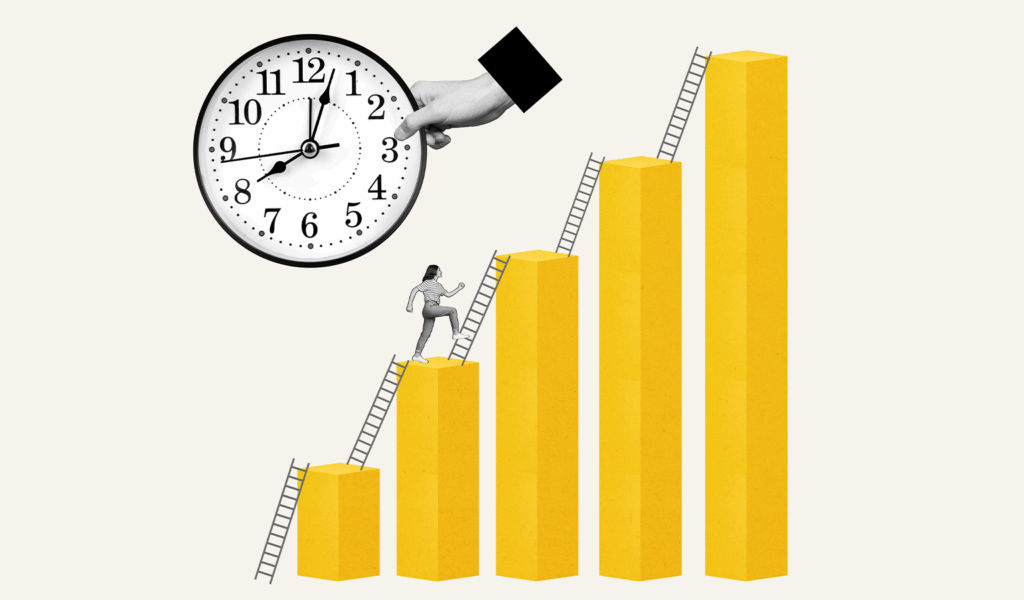In their book Insight Selling, Mike Shultz and John Doerr lay out a clear path for selling success: connect, convince, and collaborate. During the connect phase, they point out that sellers must connect the dots, and connect with people. Connecting the dots is about demonstrating understanding, and providing insight into how buyers can improve their business going forward. It’s really critical. But for this article, let’s focus on connecting with people. It’s just as important, if not more so. Let me explain why and cover some ways to connect.
Remember Maslow’s hierarchy of needs? It’s the pyramid that outlines basic human needs like food, subsistence, at the base of the, and moves all the way up to self-actualization at the top. Maslow’s key finding was: you can’t move to another level in the pyramid until you satisfy the needs at your current level. The same thing goes for connecting with buyers. You’re not going to convince anybody, or get much chance to collaborate if you don’t connect first. And, if you don’t connect with the person, you’re not going to make much progress connecting the dots.
Let me give you a glaring example of what not to do, then we can discuss some key skills to develop that will help you connect.
I was recently interviewing a guy for a key marketing role. Everything was going fine. Good experience, very articulate, and the resume was sound. All of a sudden, after asking him a few questions on his philosophy, he launched into a fairly detailed and unvarnished critique of our website, our messaging, and our product positioning. Basically, we had it all wrong. Maybe it was an attempt to impress with knowledge and insight. In fact, some of his points were valid. But, at the human level, it is was a real turn off. He simply hadn’t connected with me enough for me to trust or take him seriously. No connection, no sale.
So let’s look at some skills we should focus on to connect with B2B buyers.
Come prepared
This is really the easiest part. It just takes developing a good habit. Research the buyers, the company, and take 10 minutes to study notes or emails you might have about their needs. Get into a pre-call / pre-meeting rhythm. It you don’t have much to go on, use a persona-based approach—looking at needs based on typical buyer roles.
I have seen so many sales reps think they can skip this step. Overcoming lack of preparation with smooth talk and schmoozing. It’s ugly to watch. Buyers see right through it. And it irritates them, especially more senior buyers, because they feel like they’re having to take the time to educate you on things you could easily have researched. Come prepared, period.
Ask good questions
“There are no stupid questions. The only stupid question is the one not asked.” Not true. There are lots of stupid questions, and nothing will turn buyers off faster than stupid, non-relevant, low-level questions—especially if they sound scripted.
Again, this is an area that’s easy to get right. Prepare your questions, and good follow up questions—based on the information you need to get. Ask open ended questions up front, followed by more specific, drill-down questions. The drill down questions are really critical, because they demonstrate your knowledge and understanding.
Finally, be flexible. The dialogue can go many directions. Let it. Get them talking. Gently guiding them to give you the information you need with good questions.
Be a great listener
“Be a good listener.” We hear this a lot, but in real B2B selling, we don’t see it as much as we should. It’s such an important selling skill, you shouldn’t be just good at it, you should be great at it. Study listening techniques, like eye contact, note taking and pausing before response. Really develop your listening skills. Take pride in your ability to listen. You can practice anywhere: at home with your spouse or kids, with your friends, with people at work. Your goal should be for people to tell you you’re a good listener. If you’re not hearing those compliments, even occasionally, you might have work to do.
This isn’t about just being polite. Great listeners give buyers the incredibly satisfying feeling of “being heard” and “being understood.” People want to talk to good listeners. Buyers connect much better with good listeners. Good listening sellers connect better and sell more than bad listening sellers.
Demonstrate understanding
Demonstrating understanding stops short of full diagnosis—where the seller starts at the top and asks question after question to fully understand the situation. This wears buyers out. It used to be common practice, but times have changed.
As you meet with buyers and discuss their situation, you’re asking good questions to uncover challenges, their vision and goals moving forward. But you’re also making confirmation statements and asking relevant follow-up questions to show your understanding. It needs to feel more like natural dialogue with the buyer doing most of the talking.
“Sharon, don’t feel like you’re behind the industry, we see this all the time. We can definitely help centralize your marketing materials and address the distribution challenges. We do this all the time.
Can you talk to me about your vision regarding…”
Show knowledge
Along the way, to really connect with buyers, you’ve got to show knowledge. They want to work with knowledgeable, competent sellers that share information they didn’t already know. You can accomplish it through good questions, sharing industry research, best practices, and stories about how other companies have solved the problem. Build up an arsenal of these knowledge points, and share them with buyers at the right time.
One note here: the knowledge you share and deliver must be relevant to their situation. The more relevant, the better. If you don’t have relevant materials and insight, don’t share at all. A quick way to blow trust and appear less than smart is to blast them with off-target, or even semi-relevant information that confuses them and requires work on their end to sift through just to determine the information is worthless to them.
So, that’s it. Five skills to develop that will help you connect better with buyers. Hope you this helps, and hope you have your best year ever.











